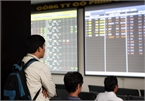Dr. Nguyen Dai Lai, former deputy director of the State Bank of Vietnam’s Banking Development Strategy Department, dives into the nuts and bolts of the statistics and looks ahead at what to expect for 2021.
 |
| Dr. Nguyen Dai Lai, former deputy director of the State Bank of Vietnam’s Banking Development Strategy Department |
Vietnam’s economy has faced many challenges in 2020. However, since the beginning of the year, the financial markets – including the markets for currency, stocks, and insurance – have been bright spots amid the otherwise gloomy scenario, not only in terms of meeting capital demands but also in making the most significant contributions to help enterprises and others to gradually overcome bad debts, prolong critical credits, and offer them more flexible channels to use capital.
Despite strong fluctuations in March, the financial market has contributed to balancing export-import and macroeconomic stability during the first nine months of the year. As of September 30, the interbank and central rates only increased by 0.03 and 0.31 per cent, respectively, compared to the beginning of the year.
Meanwhile, the US Dollar Index decreased by 2.2 per cent and many other currencies in the region depreciated by 5-7 per cent against the US dollar since the beginning of the year. In Vietnam, the realised capital from the state budget reached VND303 trillion ($13.2 billion), equalling 59.7 per cent of the year’s plan and representing an increase of 33.3 per cent over the same period last year.
This was made possible by active and flexible monetary policies. In the first nine months, interest rate levels decreased markedly due to the increase in liquidity of the institutional credit system, thanks to the State Bank of Vietnam’s (SBV) measures. According to the SBV, credit growth until September 22 increased 5.12 per cent compared to the beginning of the year – although it remains low, it presents a great achievement in the current context.
Vietnam’s good control of the pandemic accompanied by a composed reopening of the economy, new modes of goods exchange, and policies to encourage the domestic sector, have been creating strong confidence on Vietnam’s financial markets.
When the VN-Index broke out from 662.5 points at the end of March only to reach 900 points at the end of September, the country’s stock market certainly gained a lot of attention. Up until September, the stock market was estimated at VND228.8 trillion ($9.94 billion), up 1.43 per cent over the same period last year. Of which, as of September 18, market capitalisation reached VND4.2 quadrillion ($182.6 billion), down 2.8 per cent compared to the end of 2019. Meanwhile, the average trading value for September reached VND7.6 trillion ($330 million) per session, up 19 per cent from the previous month.
In the first nine months of 2020, the average trading value on the market reached VND5.8 trillion ($252.17 million) per session, up 25.3 per cent compared to the average of 2019.
Currently, the market has 744 listed shares and fund certificates and 905 shares registered for trading on the Unlisted Public Company Market with a total value of reaching VND1.4 quadrillion ($60.87 billion), up 3 per cent compared to the end of 2019.
Elsewhere, as of September 24, the VN-Index reached 912.5 points, up 3.5 per cent from the end of the previous month and down only 5 per cent from the end of 2019. In the first nine months, the average transaction value reached VND9.6 trillion ($417.4 million) per session, up 5.1 per cent compared to 2019’s average.
However, by the end of September, the VN-Index remained volatile and selling pressure could still appear at any given moment, especially as the current resistance zone sits at 900-920 points, which is a difficult area to overcome in the context of economic difficulties in the current pandemic.
Meanwhile in the insurance market, premium revenue of the whole market after the first nine months was estimated to increase by 14 per cent over the same period last year. In which, premium revenue in life insurance and non-life insurance increased by 17 and 7 per cent respectively.
Up until the beginning of September, benefit payments were estimated at nearly VND30 trillion ($1.3 billion), up 18.3 per cent over the same period in 2019. Total equity of insurance businesses has reached VND110.7 trillion ($4.8 billion), up 18.3 per cent, and the total value of assets in the sector reached VND525.4 trillion ($22.84 billion), up 19.9 per cent.
When it comes to Vietnam’s economic prospects for the entire year, international organisations all forecast low growth. While the World Bank forecast 2.8 per cent, the Asian Development Bank spoke of 1.8 per cent. However, in the context of a global recession, Vietnam’s stability in the financial market will contribute to stabilising and developing the country’s socioeconomic development in the following years.
To do so, Vietnam needs to promote and strengthen several solutions to access the supply and capital needs of the economy, such as reducing interest rates, restructuring debt, driving capital to the right addresses, and knowing how to use idle capital with the population and businesses effectively. The nation also needs to connect capital flows with public investment and reduce bank profits to share difficulties with customers.
One of the priority issues is to find the best solution for the relationship between the financial market and its customers. In my opinion, that is the relationship between the seller and the buyer, one that is often lost when doing business in these markets.
Another crucial point to discuss is the credit market. During the first eight months of the year, deposit growth was always higher than credit growth, showing an improvement in the liquidity of the system. But on the other hand, the capital of the economy remains generally weak and requires increased public investment to attract additional capital from the financial market. VIR

Multi-trillion VND helps VN-Index regain peak
The strong cash flow to the stock market in recent days has helped stock prices bounce back.

A financial hub too far
Higher instability may cost Hong Kong the leading position as Asia’s financial center. It could be an opportunity for emerging financial markets.